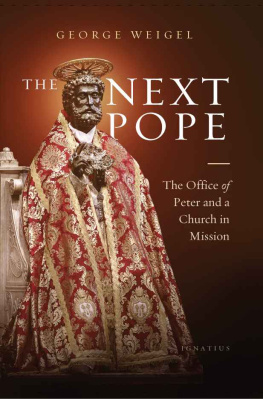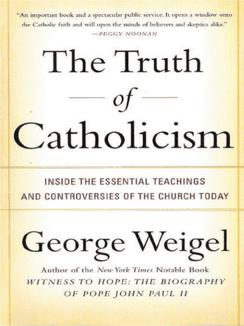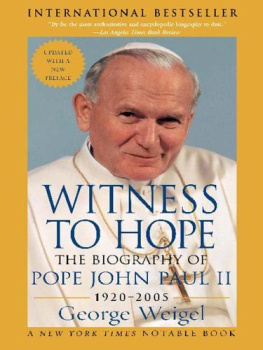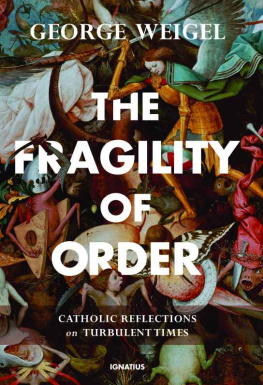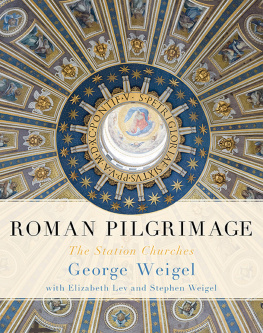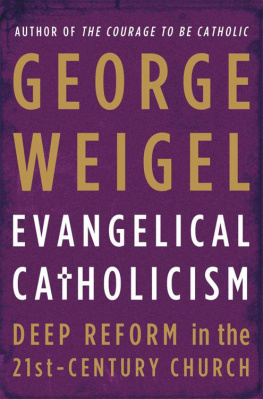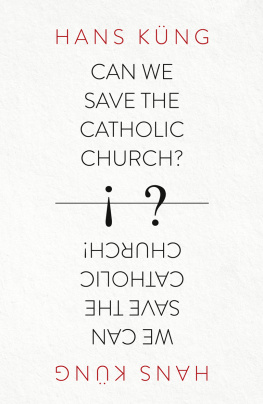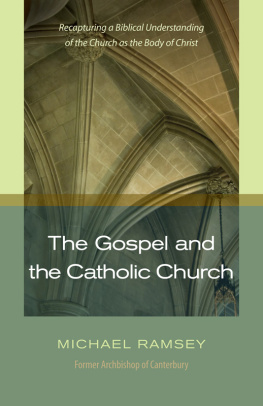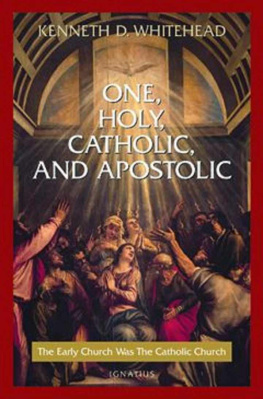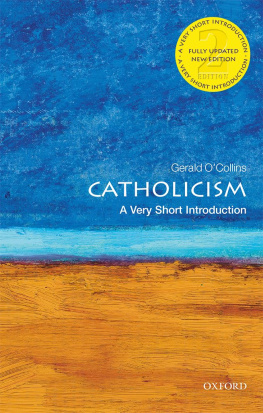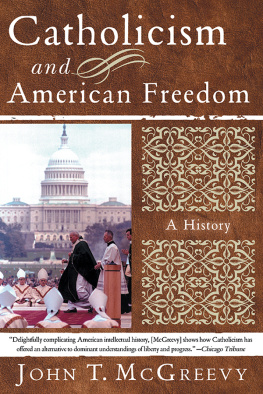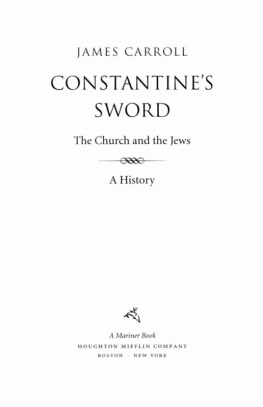Copyright 2019 by George Weigel
Cover design by Ann Kirchner
Cover copyright 2019 Hachette Book Group, Inc.
Hachette Book Group supports the right to free expression and the value of copyright. The purpose of copyright is to encourage writers and artists to produce the creative works that enrich our culture.
The scanning, uploading, and distribution of this book without permission is a theft of the authors intellectual property. If you would like permission to use material from the book (other than for review purposes), please contact permissions@hbgusa.com. Thank you for your support of the authors rights.
Basic Books
Hachette Book Group
1290 Avenue of the Americas, New York, NY 10104
www.basicbooks.com
First Edition: September 2019
Published by Basic Books, an imprint of Perseus Books, LLC, a subsidiary of Hachette Book Group, Inc. The Basic Books name and logo is a trademark of the Hachette Book Group.
The Hachette Speakers Bureau provides a wide range of authors for speaking events. To find out more, go to www.hachettespeakersbureau.com or call (866) 376-6591.
The publisher is not responsible for websites (or their content) that are not owned by the publisher.
Library of Congress Cataloging-in-Publication Data
Names: Weigel, George, 1951 author.
Title: The irony of modern Catholic history : how the Church rediscovered itself and challenged the modern world to reform / George Weigel.
Description: First Edition. | New York, NY : Basic Books, an imprint of Perseus Books, a subsidiary of Hachette Book Group, 2019. | Includes bibliographical references and index.
Identifiers: LCCN 2019013176 (print) | LCCN 2019019951 (ebook) | ISBN 9780465094349 (ebook) | ISBN 9780465094332 (hardcover)
Subjects: LCSH: Catholic ChurchHistory19th century. | Catholic ChurchHistory20th century. | Catholic ChurchHistory21st century.
Classification: LCC BX1386 (ebook) | LCC BX1386 .W45 2019 (print) | DDC
282.09/034dc23
LC record available at https://lccn.loc.gov/2019013176
ISBNs: 978-0-465-09433-2 (hardcover), 978-0-465-09434-9 (ebook)
E3-20190805-JV-NF-ORI
In Memoriam
D ON J. B RIEL
19472018
M ark Twain dubbed it the awful German language, but it does have its uses, and one of them is to teach us that history has two dimensions: there is Historie (what happened) and there is Geschichte (what the things that happened mean). The latter helps get the former into focus. The former grounds the latter in reality. Facts are important, but history is never just a question of the facts, for the facts are always read through an interpretive framework.
Thus two historians study Ronald Reagan with the same basic biographical facts at hand: the first portrays him as a great president, the man who won the Cold War and gave America an era of prosperity and confidence; the second tells the story of an amiable lightweight who was preternaturally lucky and left office before his incapacities revealed themselves to the world. Both historians are working with the same materials; what distinguishes them is a matter of focus.
What follows here is very much a matter of focusing, or, better, refocusing. This is not in any sense a comprehensive history of the Catholic Church over the past 250 years. Rather, it is the refocusing of a story written about in much greater detail by a host of other authors. Think of what follows as akin to emblemata: those framed mosaic arrangements, often telling a story from history or mythology, that were much favored as decorations in the homes of the ancient Roman aristocracy. Using bright pieces of stone fashioned by distinguished historians, including Hubert Jedin, J. N. D. Kelly, Owen Chadwick, Eamon Duffy, and John OMalley, I have rearranged the stonesthe actors and action within each of this dramas five actsand placed them in a new frame. If the word narrative had not been pummeled into incoherence through overuse, renarrativizing might be the word of choice to describe the way the story of Catholicism-and-modernity is told here. But reframing or refocusing will do.
Four vignettes help set the stage for the drama to come.
Gaeta, Italy, August 2, 1849. Pope Pius IX, taking temporary refuge in the port city of Gaeta after fleeing anticlerical revolutionary forces in Rome, becomes the first pontiff to set foot on sovereign American territory by visiting USS Constitution, accompanied by his host and protector, King Ferdinand II of the Two Sicilies. Pius, who has serious doubts about the American idea of religious freedom embodied in the constitutional separation of Church and state, is greeted by a twenty-one-gun salute as he steps onto the main deck of the frigate known as Old Ironsides, and receives another royal salute when he leaves, after meeting the ships Catholic crew members and dispensing rosaries. The Pope returns to Rome; but time is running out on his control of the Papal States, which ends on September 20, 1870, when troops of the Kingdom of Italy break through Romes Porta Pia and claim the Eternal City as the capital of a united Italian nation. Having declined an offer by American seminarians to take up arms in his defense, and after ordering papal troops to surrender after firing one volley for the sake of honor, Pius IX retires inside the Leonine Wall, calling himself The Prisoner of the Vatican, and never steps outside until his death in 1878. When his body is transferred to the Basilica of St. Lawrence Outside the Walls in 1881, the Roman mob attacks the procession and tries to throw the casket into the river.
Vatican City, December 7, 1965. At the conclusion of its fourth and final session, the Second Vatican Council adopts its Declaration on Religious Freedom, which is then promulgated by Pope Paul VI. Dignitatis Humanae, as the Declaration is known from the first words of its Latin text, has been one of the most extensively debated documents of Vatican II. Its proponents include American bishops who want the universal Church to acknowledge that the American constitutional arrangement on Church and state is something good for the Church; Western European bishops who want to get beyond the antagonisms launched by the French Revolution and other radical secularist movements; East-Central European bishops seeking another weapon with which to fight communism; and ecumenically minded bishops eager to advance the cause of Christian unity. The opposition comes primarily from bishops skeptical about political modernity, who still believe that Catholic establishmentthe old alliance of altar and throneis the ideal arrangement. The overwhelming vote in favor of


